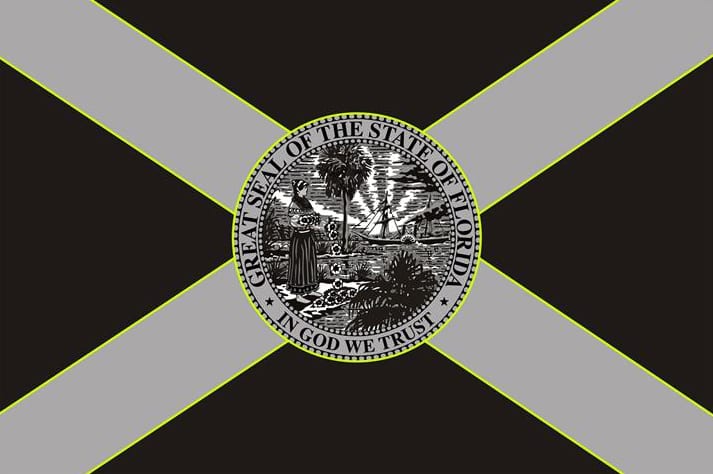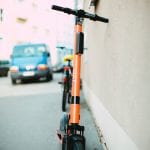

We are Attorneys and We are Riders
We Represent Florida Cyclists
Had a Bicycle Crash in Florida?
Contact Ben Dodge in our network to see if the bicycle crash lawyers at Bike Accident Attorneys (BAA) can help you find an excellent bicycle crash lawyer licesned in Florida. Unlike other lawyers who attempt to represent cyclists, our BAA lawyers actually ride and race their bicycles as well as appear and win in court. Most attorneys are just pencil pushers. We are court room litigators who are passionate about riding our bikes and we have associated local counsel in other states to allow us to help you in your state. Based on our expertise and experience we have also been admitted in other states to appear in court for our bicycle crash clients on a case by case basis. We can help you directly or ensure that you get the quality help you need in your state. Contact Ben Dodge now to see how a qualifed lawyer can help protect your rights. Ben has a passion for connecting cyclists all over the country with qualifed bicycle crash lawyers.
3 Tips on Choosing the Best Bicycle Crash Lawyer and Avoid Being Scammed
So how do you know if you have the best lawyer? There are 3 things to investigate when hiring a bicycle lawyer that can help you avoid a scammer. Some of that depends on what you think the “best” really means. To me, it is simple. The “best” lawyer will get you to the most advantageous position possible with as little cost as possible. That’s it. Nothing else to it. I have seen too many lawyers give up or miss out on incredible opportunities for their clients because of their own egos arguing the irrelevant issues or pushing too hard in a direction that only generates their own fees as opposed to the results the client would rather have.
The most advantageous position is sometimes not even what the client comes in asking for. I can’t tell you how many times I probably talked myself out of a job in an initial consult because what the client wanted actually puts them in a worse position and I wasn’t afraid to tell them so. It would have been so much easier to just tell them what they desperately wanted to hear, help them feel heard and let them vent a little. All just tell them we better hurry up and rush to court so they can be vindicated. When in reality, that won’t help them at all. So that is what many lawyers do- they try to figure out what the client wants emotionally and then sell them a legal service that matches that emotional need and of course charge them for it based on whatever they think the client is able to pay.
Obviously not all attorneys are this cold-hearted. Many of us actually care. Many of us strive to do right by the client as opposed to just trying to do right by the pocket book.
Here are some general things to watch out for when looking for an attorney, especially a bicycle accident lawyer (I don’t like the word accident, I prefer “crash” – but most of the world uses the term accident and I understand why, so I sue it too). Here are the issues to watch out for:
1) Specific Knowledge
Do they have the specific knowledge required to handle your case? Just because they graduated from law school doesn’t mean they know anything about cycling! In fact, in my opinion, most of the country doesn’t know anything about cycling. It is crazy that all sorts of professionals from police offices charged with enforcing cycling safety to insurance adjusters responsible for finding fault don’t know anything about cycling laws. This is especially true with local rules, ordinances, and even more so with knowledge of local customs and implied expectations of cycling culture and more. Now fast forward to the moment when you are looking for an attorney to help you with your crash (your bicycle accident case) and you see a billboard on the side of the freeway, or a TV commercial, or even a Google search where the words cycling lawyer were used… How much specific knowledge of bicycle cases do you think they really have? Ask them how often they ride? Ask them what their favorite route is? Ask them if they could buy any bike on the planet what would it be and why? These questions will help you quickly identify if they are even remotely plugged into the cycling community and whether or not they have specific knowledge relating to cycling. Why is this important? SIMPLE- as a cyclist you already know that most people (drivers) hate that we are out on the roads. You already have an uphill court battle of public opinion. Being right on some traffic issue isn’t enough for us. Your lawyer must know this intimately in order to successfully navigate the complex negotiations of your case with the insurance company and opposing attorneys and then ultimately in a court room where you can bet no one on the jury will be a cyclist.
Also on the topic of specific knowledge. How many cases like this issue have they handled? What were the outcomes? How confident do you feel with their answers to these questions? Specific case knowledge is helpful. Do they have experience with the opposing insurance company? With that specific police department? With your judge? And on and on.
Specific knowledge is very helpful and you can’t buy it with expensive marketing on billboards, commercials, etc. It is earned with blood, sweat, and sometimes tears through years of experience.
2) Desk or Courtroom
The next thing to investigate is whether or not the attorney you’re thinking about hiring is a desk lawyer (I fondly refer to these lawyers as pencil pushers) or a courtroom lawyer. There is a need for all sorts of lawyers. But unless you are planning on having your bicycle accident attorney draft a will or some contract for you, then you want a courtroom lawyer not a pencil pusher.
I know this is a guess, but in my experience it seems like 95% of lawyers, especially the ones who end up on billboards and commercials, are just pencil pushers. Once their cases get to tough they refer them out to a real lawyer to finish the courtroom stuff for them. Most attorneys talk a big talk in their consult with potential clients about how good they are, but when push comes to shove and they have to actually prove it to you in a courtroom with you watching, their peers (opposing lawyers on the other side of your case) and in front of a judge and jury- they simply freak out and completely drop the ball or settle for less than you should ever take just to avoid the scary courtroom.
Don’t mistakenly hire a pencil pusher. Hire a bicycle accident lawyer who thrives in the courtroom. One simple question to help catch them off guard is ask them when is the last time they were in court? What was it about? What kind of hearing was it? What was the argument they proposed and made to the judge? How did it turn out? These simple questions will help you find out if they are pencil pushers or not. Their hesitation or odd answers are a dead give away that they are likely misleading you on their courtroom abilities and experience.
We are courtroom lawyers, sometimes even going multiple times per week to court. We file lawsuits, we don’t just write a few meaningless settlement letters and sell our clients on how good the settlement is- we prove it to our clients.
3) Do You Recognize Them from a Billboard or Commercial?
Yes I said that right, do you actually recognize them from a billboard or a TV commercial? Why is this even a thing? Well, it sounds harsh but those lawyers out there spending hundreds of thousands of dollars per year (for some they spend that per month) just to recruit new clients may be struggling to get their current and past clients to even refer to them… Yep, what if your lawyer was so good and you were so impressed that you happily sent business to him/or her? See how powerful that is? I’m not saying that everyone who advertises in our line of work is a horrible lawyer. What I am saying is that it is a bit suspect since advertising is NOT cheap and it begs the question as to why they have to advertise in the first place? Is their reputation with their own clients so bad that they have to find an alternative source to finding clients? Possibly. I’m one of those guys who avoids, in fact runs away from any professional I see on a billboard. I’d much rather consult a trusted friend and get their opinion as to whom I should see or NOT see based on their experience.
Not all lawyers who advertise are bad. But like I said, I personally run away from any professional on a billboard or TV commercial. A good old fashioned referral has always proved to be much better much more often. Just sayin’.

These are just 3 of the many things to look out for when you hire a bicycle accident lawyer. Call my office up and we can chat over the phone sometime about all the other million things to look out for like attorney billable hour quotas, bonus structures, professional reputation among peers, and so much more!
We will help find you a qualified bicycle lawyer! We are here for you. We got your back. We protect our own like you’re a member of our tribe. Good luck. Be safe out there and keep the rubber side down.
Contact Ben Dodge and let the lawyers in the Bike Accident Attorneys National Network help you find a qualified bicycle lawyer in Florida. We have your back. We are here for you.
#MyLawyerDoesntSuck


Need a Consultation?

Florida Bicycle Accident Statistics
Resident Population
20,612,000
Total Traffic Fatalities
3,174
Pedalcyclist Fatalities
138
Percentage of Total Traffic Fatalities
4.3%
Pedalcyclist Fatalities per Million Population
6.69
Florida Bicycle Statutes
316.2065 Bicycle regulations.—
(1) Every person propelling a vehicle by human power has all of the rights and all of the duties applicable to the driver of any other vehicle under this chapter, except as to special regulations in this chapter, and except as to provisions of this chapter which by their nature can have no application.
(2) A person operating a bicycle may not ride other than upon or astride a permanent and regular seat attached thereto.
(3)(a) A bicycle may not be used to carry more persons at one time than the number for which it is designed or equipped, except that an adult rider may carry a child securely attached to his or her person in a backpack or sling.
(b) Except as provided in paragraph (a), a bicycle rider must carry any passenger who is a child under 4 years of age, or who weighs 40 pounds or less, in a seat or carrier that is designed to carry a child of that age or size and that secures and protects the child from the moving parts of the bicycle.
(c) A bicycle rider may not allow a passenger to remain in a child seat or carrier on a bicycle when the rider is not in immediate control of the bicycle.
(d) A bicycle rider or passenger who is under 16 years of age must wear a bicycle helmet that is properly fitted and is fastened securely upon the passenger’s head by a strap and that meets the federal safety standard for bicycle helmets, final rule, 16 C.F.R. part 1203. A helmet purchased before October 1, 2012, which meets the standards of the American National Standards Institute (ANSI Z 90.4 Bicycle Helmet Standards), the standards of the Snell Memorial Foundation (1984 Standard for Protective Headgear for Use in Bicycling), or any other nationally recognized standards for bicycle helmets adopted by the department may continue to be worn by a bicycle rider or passenger until January 1, 2016. As used in this subsection, the term “passenger” includes a child who is riding in a trailer or semitrailer attached to a bicycle.
(e) Law enforcement officers and school crossing guards may issue a bicycle safety brochure and a verbal warning to a bicycle rider or passenger who violates this subsection. A bicycle rider or passenger who violates this subsection may be issued a citation by a law enforcement officer and assessed a fine for a pedestrian violation, as provided in s. 318.18. The court shall dismiss the charge against a bicycle rider or passenger for a first violation of paragraph (d) upon proof of purchase of a bicycle helmet that complies with this subsection
(4) No person riding upon any bicycle, coaster, roller skates, sled, or toy vehicle may attach the same or himself or herself to any vehicle upon a roadway. This subsection does not prohibit attaching a bicycle trailer or bicycle semitrailer to a bicycle if that trailer or semitrailer is commercially available and has been designed for such attachment.
(5)(a) Any person operating a bicycle upon a roadway at less than the normal speed of traffic at the time and place and under the conditions then existing shall ride in the lane marked for bicycle use or, if no lane is marked for bicycle use, as close as practicable to the right-hand curb or edge of the roadway except under any of the following situations:
1. When overtaking and passing another bicycle or vehicle proceeding in the same direction.
2. When preparing for a left turn at an intersection or into a private road or driveway.
3. When reasonably necessary to avoid any condition or potential conflict, including, but not limited to, a fixed or moving object, parked or moving vehicle, bicycle, pedestrian, animal, surface hazard, turn lane, or substandard-width lane, which makes it unsafe to continue along the right-hand curb or edge or within a bicycle lane. For the purposes of this subsection, a “substandard-width lane” is a lane that is too narrow for a bicycle and another vehicle to travel safely side by side within the lane.
(b) Any person operating a bicycle upon a one-way highway with two or more marked traffic lanes may ride as near the left-hand curb or edge of such roadway as practicable.
(6) Persons riding bicycles upon a roadway may not ride more than two abreast except on paths or parts of roadways set aside for the exclusive use of bicycles. Persons riding two abreast may not impede traffic when traveling at less than the normal speed of traffic at the time and place and under the conditions then existing and shall ride within a single lane.
(7) Every bicycle in use between sunset and sunrise shall be equipped with a lamp on the front exhibiting a white light visible from a distance of at least 500 feet to the front and a lamp and reflector on the rear each exhibiting a red light visible from a distance of 600 feet to the rear. A bicycle or its rider may be equipped with lights or reflectors in addition to those required by this section. A law enforcement officer may issue a bicycle safety brochure and a verbal warning to a bicycle rider who violates this subsection or may issue a citation and assess a fine for a pedestrian violation as provided in s. 318.18. The court shall dismiss the charge against a bicycle rider for a first violation of this subsection upon proof of purchase and installation of the proper lighting equipment.
(8) No parent of any minor child and no guardian of any minor ward may authorize or knowingly permit any such minor child or ward to violate any of the provisions of this section.
(9) A person propelling a vehicle by human power upon and along a sidewalk, or across a roadway upon and along a crosswalk, has all the rights and duties applicable to a pedestrian under the same circumstances.
(10) A person propelling a bicycle upon and along a sidewalk, or across a roadway upon and along a crosswalk, shall yield the right-of-way to any pedestrian and shall give an audible signal before overtaking and passing such pedestrian.
(11) No person upon roller skates, or riding in or by means of any coaster, toy vehicle, or similar device, may go upon any roadway except while crossing a street on a crosswalk; and, when so crossing, such person shall be granted all rights and shall be subject to all of the duties applicable to pedestrians.
(12) This section shall not apply upon any street while set aside as a play street authorized herein or as designated by state, county, or municipal authority.
(13) Every bicycle shall be equipped with a brake or brakes which will enable its rider to stop the bicycle within 25 feet from a speed of 10 miles per hour on dry, level, clean pavement.
(14) A person engaged in the business of selling bicycles at retail shall not sell any bicycle unless the bicycle has an identifying number permanently stamped or cast on its frame.
(15)(a) A person may not knowingly rent or lease any bicycle to be ridden by a child who is under the age of 16 years unless:
1. The child possesses a bicycle helmet; or
2. The lessor provides a bicycle helmet for the child to wear.
(b) A violation of this subsection is a nonmoving violation, punishable as provided in s. 318.18.
(16) The court may waive, reduce, or suspend payment of any fine imposed under subsection (3) or subsection (15) and may impose any other conditions on the waiver, reduction, or suspension. If the court finds that a person does not have sufficient funds to pay the fine, the court may require the performance of a specified number of hours of community service or attendance at a safety seminar.
(17) Notwithstanding s. 318.21, all proceeds collected pursuant to s. 318.18 for violations under paragraphs (3)(e) and (15)(b) shall be deposited into the State Transportation Trust Fund.
(18) The failure of a person to wear a bicycle helmet or the failure of a parent or guardian to prevent a child from riding a bicycle without a bicycle helmet may not be considered evidence of negligence or contributory negligence. (19) Except as otherwise provided in this section, a violation of this section is a noncriminal traffic infraction, punishable as a pedestrian violation as provided in chapter 318. A law enforcement officer may issue traffic citations for a violation of subsection (3) or subsection (15) only if the violation occurs on a bicycle path or road, as defined in s. 334.03. However, a law enforcement officer may not issue citations to persons on private property, except any part thereof which is open to the use of the public for purposes of vehicular traffic.






